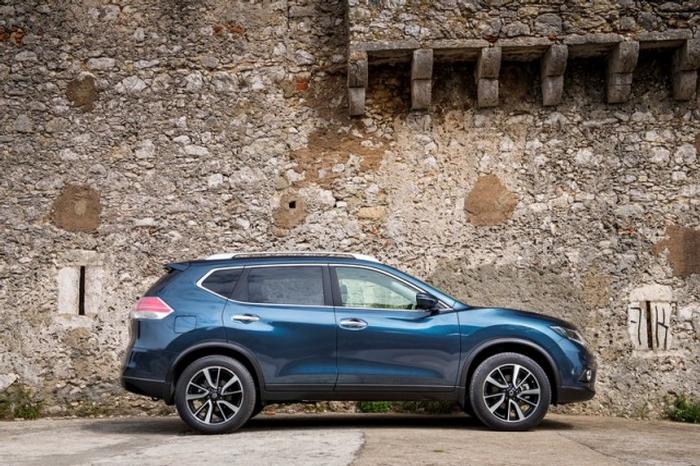2013 - 2022 Nissan X-Trail SUV Review

Buyer's guide to the Nissan X-Trail Mk3: 2013 - 2022
Review
When the third-generation Nissan X-Trail arrived in 2013, it marked a significant departure from the previous two editions. While those cars were chunky SUVs that were geared towards off-road use, the X-Trail Mk3 had a lot more in common with the second-generation Nissan Qashqai. In fact, it's better to think of this X-Trail as a replacement for the previous Qashqai+2.
The X-Trail is marginally larger than the Qashqai, and like the Qashqai+2 it was available with seven seats. That places it in a busy part of the compact SUV sector, where seven-seat rivals included the Kia Sportage and Hyundai Santa Fe, while the Volkswagen Tiguan Allspace, Skoda Kodiaq and SEAT Tarraco are also strong contenders. There are other rivals that are similar in size to the X-Trail, but don't offer seven seats - cars like the Toyota RAV4, Honda CR-V, Ford Kuga and Renault Koleos.
What's it like?
From a distance, the Nissan X-Trail can easily be confused with the Qashqai, and the design is a lot different from its boxy predecessors’. The main differences between the X-Trail and Qashqai are found in the LED daytime running lights, while the X-Trail has a longer body and more upright rear end to make space for the third row of seats. An update in 2017 introduced a revised look and more efficient engines.
All of the X-Trail's running gear is shared with the Qashqai. Petrol engines include 1.3, 1.6 and 2.0-litre units, while the diesels are 1.6, 1.7 and 2.0-litre in size, although the vast majority of powerplants on offer are diesels. Front-wheel drive is the most common powertrain configuration (it's the only option with the petrol engines) and four-wheel drive only came with the most powerful diesels in top-spec trims. Gearbox choices also depend on which engine you go for, with manuals only for the smaller units, while the largest powerplants had a choice of manual or CVT-style automatics.
Which model to go for?
Petrol power is a rarity for the X-Trail, while only a small number of cars had a five-seat layout. Four-wheel-drive models aren't common, either, and we'd only recommend one of these if you are planning on towing. Stick with diesel and front-wheel drive, and you will have a large number of used models to choose from.
Trim levels comprise SV, SV Premium and SVE, while UK imports feature Acenta, N-Connecta, N-Tec and Tekna trims. All models are pretty well equipped, while high-spec versions feature items such as 360-degree cameras, navigation, heated leather seats, panoramic glass and climate control. Nissan didn't offer many optional extras, so it's pretty easy to compare used models.
If you're looking for a seven-seat family car, the rearmost row in the X-Trail is tight and only really suitable for small children. Some of the rivals mentioned above have more space, although none will have as much room as a similarly priced MPV. Think of the X-Trail's rearmost seats as being there for occasional use because you'll either be able to carry extra passengers or luggage, not both.
Does anything go wrong?
Only two recalls have been issued on the X-Trail, covering the engine's rear oxygen sensor and the gas struts for the tailgate. Issues reported by owners include a poor earth in the electronics that causes the ABS and ESP warning lights to illuminate, while faulty fuel injectors have been reported, too. The air conditioning control unit can fail, while a camshaft issue will cause 2.0-litre diesels to be hard to start. As ever, choose a car with a full service history for the greatest peace of mind.



